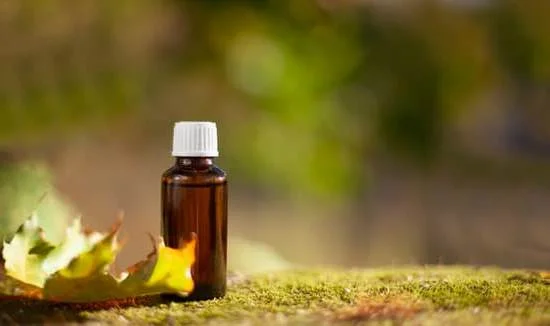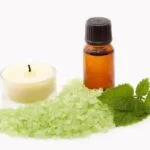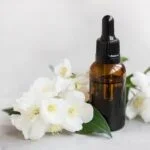Essential oils are essential pils related to aromatherapy, a practice that has gained popularity in recent years for its potential to promote wellness and relaxation. In this section, we will explore the origins and evolution of essential oils and aromatherapy practices, including their use in ancient civilizations and traditional medicine.
We will delve into the science behind essential oils, including their extraction process and how they interact with the body and mind. Additionally, we will detail the various benefits of aromatherapy, such as stress relief, improved sleep, and enhanced mood.
Aromatherapy is a holistic healing treatment that uses natural plant extracts to promote health and well-being. Essential oils are the foundation of aromatherapy, derived from various parts of plants through methods like distillation or cold-press extraction. When inhaled or applied to the skin, these concentrated plant extracts are believed to have therapeutic effects on both the mind and body.
Throughout history, essential oils have been used in traditional medicine systems such as Ayurveda and Chinese medicine. The use of aromatic substances for healing and ritual dates back thousands of years to ancient civilizations like Egypt, Greece, Rome, and India. These early cultures recognized the power of aromatic plants for physical and spiritual well-being, laying the groundwork for modern-day aromatherapy practices.
History of Essential Oils and Aromatherapy
The use of essential oils and aromatherapy can be traced back to ancient civilizations, where various plant extracts were used for medicinal and spiritual purposes. In ancient Egypt, essential oils were utilized in religious ceremonies, as well as for embalming and skincare. The Egyptians were known to have pioneered the distillation process to extract essential oils from plants, laying the foundation for the practice of aromatherapy.
Similarly, in ancient China and India, aromatic plant oils were integrated into traditional medicine systems such as Ayurveda and Traditional Chinese Medicine (TCM). These cultures recognized the therapeutic properties of essential oils for treating physical ailments and promoting overall well-being. Essential oils like frankincense, myrrh, and sandalwood were highly valued for their healing properties in these ancient traditions.
During the Renaissance period in Europe, there was a resurgence of interest in herbal remedies and aromatic substances. This led to the development of perfumery as an art form and the use of essential oils for their fragrance-enhancing properties. The advancement of distillation techniques further contributed to the popularity of essential oils in European societies.
The Evolution of Aromatherapy Practices
Over time, the knowledge and practices related to essential oils evolved into what is now known as aromatherapy. French chemist René-Maurice Gattefossé is credited with coining the term “aromatherapy” in the early 20th century after experiencing the healing effects of lavender oil on a burn injury. Gattefossé’s work laid the groundwork for modern aromatherapy as a holistic approach to health and wellness using natural plant extracts.
As scientific research continues to uncover the mechanisms behind essential oils’ therapeutic effects, the history of essential oils and aromatherapy continues to evolve. Today, aromatherapy has become increasingly popular as a complementary therapy for various health conditions, with a focus on promoting relaxation, reducing stress, and improving emotional balance.
How Essential Oils Work
Extraction Process
Essential oils are highly concentrated plant extracts that are derived from various parts of plants, including the flowers, leaves, stems, and roots. The extraction process involves methods such as steam distillation, cold pressing, or solvent extraction.
For example, the oil from citrus peels is often extracted through cold pressing, while the steam distillation method is commonly used for flowers and leaves. This careful extraction process ensures that the beneficial compounds and aromatic properties of the plants are preserved in the essential oil.
Interaction With the Body and Mind
When inhaled or applied to the skin, essential oils can have profound effects on both the body and mind. The molecules in essential oils are small enough to be absorbed through the skin and into the bloodstream, where they can exert their therapeutic benefits. Additionally, when inhaled, these aromatic molecules can directly affect areas of the brain involved in emotion and memory.
For example, inhaling lavender essential oil has been shown to have a calming effect on the nervous system and can help alleviate stress and anxiety. Furthermore, certain essential oils have antimicrobial properties that can help fight off harmful bacteria or viruses when used topically.
Impact on Physical Health
Beyond their psychological effects, essential oils also have potential benefits for physical health. For instance, tea tree oil is known for its antibacterial and antifungal properties and is commonly used in skincare products to treat acne and other skin conditions. Peppermint oil has been found to have analgesic effects and may provide relief from headaches when applied topically. The diverse range of chemical components found in essential oils contributes to their versatility in addressing various health concerns.
Benefits of Aromatherapy
Essential oils are indeed related to aromatherapy, as they are the primary element used in this practice to promote physical and psychological well-being. Aromatherapy involves the use of these highly concentrated plant extracts to provide therapeutic benefits through various applications, such as inhalation, topical application, and even ingestion in some cases. The unique scents of essential oils are known to have a direct impact on the limbic system in the brain, which is responsible for emotions, behavior, and memory.
The relationship between essential oils and aromatherapy lies in the ability of these natural substances to elicit specific responses in the body and mind when used appropriately. By harnessing the power of aromatic compounds found in plants, aromatherapy aims to alleviate stress, improve sleep quality, enhance mood, and address various physical discomforts. This holistic approach to wellness has gained popularity due to its non-invasive nature and potential for promoting relaxation and overall well-being.
When it comes to utilizing essential oils for aromatherapy purposes, it’s important to understand the specific benefits associated with different types of oils. Some popular essential oils commonly used in aromatherapy include lavender, known for its calming properties; peppermint, which can help boost energy levels; and chamomile, often used for its soothing effects. The versatility of essential oils allows individuals to customize their aromatherapy experience based on their unique needs and preferences.
- Aromatherapy aims
- Holistic approach
- Customize personal experience
Popular Essential Oils and Their Uses
Aromatherapy is the use of essential oils for therapeutic purposes, such as improving mood, relieving stress, and promoting relaxation. The practice has been around for centuries and is deeply rooted in the historical use of essential oils for healing and well-being. Essential oils are highly concentrated plant extracts that capture the natural aroma and beneficial properties of plants. When inhaled or applied to the skin, these oils can have various effects on the body and mind.
The relationship between essential oils and aromatherapy is integral, as essential oils are the primary tools used in aromatherapy practices. Different essential oils are known for their specific properties and benefits, making them suitable for various applications in aromatherapy. For example, lavender oil is commonly used to promote relaxation and improve sleep quality, while peppermint oil is often used to increase energy and mental alertness.
In addition to their specific uses in aromatherapy, essential oils can also be blended together to create customized aromas that address multiple needs at once. This versatility allows for a wide range of options when using essential oils for therapeutic purposes. Understanding the unique qualities of different essential oils and how they can be effectively utilized in aromatherapy is crucial for reaping their full benefits.
| Essential Oil | Primary Use |
|---|---|
| Lavender | Promotes relaxation and improves sleep quality |
| Peppermint | Increases energy and mental alertness |
Research and Evidence
Aromatherapy is a holistic healing treatment that uses natural plant extracts to promote health and well-being. Essential oils, which are highly concentrated compounds extracted from plants, are often used in aromatherapy practices. The use of essential oils in aromatherapy is based on the idea that their aromatic compounds can have a direct effect on the body and mind. They can be used topically, inhaled, or even ingested (with caution) for their therapeutic benefits.
Scientific studies have provided evidence supporting the effectiveness of essential oils in aromatherapy. Research has shown that certain essential oils have properties that can help reduce stress, anxiety, and depression. For example, lavender essential oil has been found to have calming effects on the nervous system, making it a popular choice for promoting relaxation and better sleep. Peppermint essential oil has been studied for its potential to improve cognitive function and increase alertness.
However, it is important to note that while there is scientific evidence supporting the benefits of essential oils in aromatherapy, there are also controversies and limitations to consider. Some critics argue that the research on aromatherapy is limited and inconclusive. Additionally, proper usage guidelines must be followed to ensure safety and avoid any adverse reactions when using essential oils for aromatherapy purposes.
Safety and Precautions
Aromatherapy, the practice of using essential oils for therapeutic purposes, has been gaining popularity in recent years as a natural and holistic approach to wellness. Essential oils are highly concentrated plant extracts that are renowned for their aromatic and healing properties.
When used in aromatherapy, essential oils can have a profound impact on both physical and mental well-being. The relationship between essential oils and aromatherapy is closely intertwined, as these potent substances serve as the foundation for this alternative healing practice.
Essential oils play a crucial role in the practice of aromatherapy, as they are the primary tools used to evoke specific responses in the body and mind. Each essential oil has its own unique chemical composition and therapeutic properties, which are harnessed during aromatherapy sessions to address various health concerns or promote overall relaxation and balance.
For example, lavender essential oil is often used for its calming effects, while eucalyptus oil is known for its ability to clear respiratory passages. The careful selection and application of essential oils are fundamental to the success of aromatherapy treatments.
The effectiveness of aromatherapy largely depends on the quality, purity, and proper usage of essential oils. It is important for individuals practicing or receiving aromatherapy treatments to understand how to use essential oils safely and effectively.
This entails being aware of potential side effects such as skin irritation or allergic reactions, as well as contraindications that may exist for certain medical conditions or medications. By following guidelines for dilution, diffusion, and topical application, individuals can maximize the benefits of essential oils while minimizing any adverse outcomes.
| Essential Oil | Primary Use |
|---|---|
| Lavender | Relaxation and sleep aid |
| Peppermint | Energy booster and headache relief |
| Eucalyptus | Respiratory support |
Conclusion
Essential oils are indeed related to aromatherapy, as they are a key component in this holistic healing practice. Aromatherapy is the therapeutic use of essential oils derived from plants and herbs to promote physical, mental, and emotional well-being.
These concentrated plant extracts are used in various ways, including inhalation, topical application, and even ingestion under the guidance of a trained professional. Essential oils are chosen for their specific properties and aromatic qualities that can have a direct impact on one’s mood, stress levels, and overall health.
The use of essential oils in aromatherapy has been traced back to ancient civilizations such as the Egyptians, Greeks, and Chinese, who recognized the powerful healing properties of plant essences. Over time, these practices have evolved and incorporated scientific research to better understand how essential oils work on a physiological level.
The relationship between essential oils and aromatherapy lies in their ability to stimulate the limbic system in the brain, which is responsible for emotions, behaviors, and memory. This direct influence on our brain chemistry explains why certain scents can evoke feelings of calmness or alertness when used in aromatherapy.
Furthermore, the potential for enhancing overall well-being through the use of essential oils in aromatherapy is supported by numerous studies demonstrating their effectiveness in reducing stress, anxiety, and improving sleep quality. It is important to note that while essential oils can offer many benefits when used properly, it is crucial to follow safety guidelines and consult with a qualified practitioner before incorporating them into your wellness routine.
By understanding the relationship between essential oils and aromatherapy, individuals can harness the power of these natural remedies for a more balanced and healthy lifestyle.
Are Essential Oils Related to Aromatherapy
In conclusion, the relationship between essential oils and aromatherapy is undeniable, as essential oils play a crucial role in the practice of aromatherapy. Throughout history, essential oils have been used for their therapeutic properties, and when used in aromatherapy, they can promote overall well-being. The benefits of aromatherapy are vast, encompassing stress relief, improved sleep, enhanced mood, and even pain management. This highlights the significant connection between essential oils and aromatherapy in promoting both physical and mental wellness.
Furthermore, scientific research has provided evidence supporting the effectiveness of essential oils in aromatherapy. Studies have shown that certain essential oils can have a direct impact on the brain’s emotional center, which may explain their ability to improve mood and reduce stress. Additionally, the use of essential oils in massage therapy or as part of a relaxation routine has shown to be beneficial for individuals seeking natural methods for managing various health issues.
It is important for individuals to approach the use of essential oils with caution and awareness about potential side effects and contraindications. When used correctly and safely, however, essential oils can be a valuable tool for promoting overall wellness through aromatherapy. As our understanding of essential oils and their connection to aromatherapy continues to evolve, it is clear that these natural remedies have a place in holistic approaches to health and well-being.
Frequently Asked Questions
Are Aromatherapy Oils the Same as Essential Oils?
Aromatherapy oils are not exactly the same as essential oils. While essential oils are a concentrated liquid containing volatile aromatic compounds from plants, aromatherapy oils could also include synthetic fragrances, carrier oils, and other additives. However, essential oils are commonly used in aromatherapy because of their natural scents and potential therapeutic benefits.
What Essential Oils Are Safe for Aromatherapy?
Several essential oils are considered safe for use in aromatherapy when properly diluted and used according to guidelines. Some popular choices include lavender for relaxation, peppermint for energy and focus, eucalyptus for respiratory support, and tea tree for its antiseptic properties. It’s important to research each oil thoroughly and consider individual sensitivities before using them in aromatherapy.
What Are the Three Types of Aromatherapy?
The three main types of aromatherapy are topical application, inhalation, and aerial diffusion. Topical application involves applying diluted essential oils directly to the skin for absorption or massage. Inhalation methods can include using a diffuser or simply inhaling the aroma from an open bottle or cloth.
Aerial diffusion uses devices like diffusers to disperse essential oil molecules into the air for inhalation. Each type of aromatherapy has its own benefits and best practices for application.

Are you looking for a natural way to improve your health and wellbeing?
If so, aromatherapy may be the answer for you.





